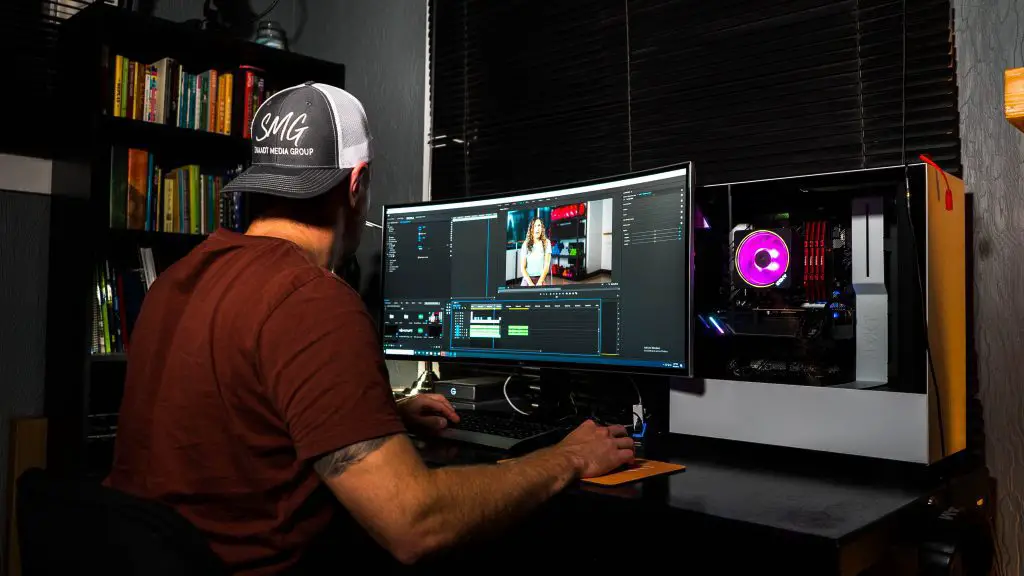Ever wondered what exactly QuickTime is and how it can enhance your digital media creations? Get ready for an exciting journey as we delve into the world of QuickTime file format, uncovering its secrets, advantages, and drawbacks. Let’s answer that burning question: What is QuickTime, and why should you care?
What is QuickTime? QuickTime is a versatile file format used for storing audio and video content, allowing seamless exchange between operating systems, devices, and applications, making it an essential tool for music producers and audio engineers looking to create and share their digital media creations efficiently and effectively.
What does the QuickTime file format entail?
QuickTime is not just some fancy software or a flashy format—it’s a whole world of digital media wonders! Picture this: it’s like having a digital treasure chest where you can store your precious audio and video content.

QuickTime file format forms the basis for MPEG-4, but it’s not widely supported, so you might be wondering, “Hey, is it worth diving into the QuickTime ocean?” Well, let me tell you, it’s like discovering a hidden gem that allows you to exchange your digital media content seamlessly across different operating systems, devices, and applications. That’s pretty rad, don’t you think?
But hold on. There’s a little catch: QuickTime supports a limited set of file formats. So, if you come across an unsupported file, you might need to grab a media converter tool to ensure you can view it properly. Think of it like having a secret decoder ring to unlock those elusive media files. And guess what? QuickTime files are built using these things called atoms. No, not the science-y atoms you learned about in school, but QuickTime atoms—the building blocks that make your digital media dreams come true!
AKAI Professional MPK Mini MK3

AKAI Professional MPK Mini MK3
What are QuickTime atoms and atom containers?
Now, you might be scratching your head and asking, “What the heck are these atoms all about, and why do I need them?” Well, atoms in the QuickTime realm are like puzzle pieces that fit together to create your magical audio and video experience. They are enhanced by QT atoms and atom containers. Think of these atoms as the superheroes of QuickTime—each with its unique power and role in bringing your media to life.
So, how does it all work? Let’s break it down with a quick rundown of these atoms and atom containers:
- Atoms: These are the basic building blocks of QuickTime files. Each atom carries specific information about your media, like duration, format, and more. It’s like having a secret language that tells your media player how to decode and display your content.
- QT Atoms: These special atoms bring an extra level of awesomeness to the table. They can contain additional data and instructions that fine-tune your media playback experience. It’s like adding special effects and customized features to your masterpiece.
- Atom Containers: Imagine these as the containers that hold your precious atoms together. They provide the structure and organization, ensuring that everything is in the right place. Think of it like building a house—without a solid foundation (or container), things can get pretty chaotic!

Why is media conversion important when working with QuickTime?
Here’s the deal: QuickTime has a bit of a selective taste when it comes to file formats. It supports a limited set of them, which means you might encounter some files that it simply can’t handle. But fret not! We’ve got a trick up our sleeves—media converters. These nifty tools can swoop in and save the day by transforming those unsupported files into a format that QuickTime can handle like a breeze.
Now, you might be thinking, “Why can’t QuickTime just play all the file formats? It’s 2023, after all!” Well, my friend, it’s like having a favorite playlist that only works with certain music players. QuickTime has its preferred file formats, and while it may seem a bit picky, it’s all about ensuring the best possible playback experience for you and your audience. So, when you encounter an unsupported file, don’t panic—just summon the mighty media converter and watch that file transform into a QuickTime-friendly format.
Media converters ensure smooth collaboration by making your files compatible with various systems.
Here’s why you should embrace the prowess of media converters when dealing with QuickTime:
- Expanded compatibility: Media converters bridge the gap between file formats, allowing you to play and work with a wider range of media files. It’s like speaking multiple languages but for digital media!
- Flexibility in workflows: Sometimes, you need to collaborate with fellow music producers or audio engineers who might use different software or devices. Media converters ensure smooth collaboration by making your files compatible with various systems.
- Preserving quality: When converting files, media converters strive to maintain the original quality of your audio and video content. No one wants to end up with pixelated visuals or distorted sound, right?
Now, my friends, as much as we appreciate the convenience of media converters, it’s important to note that they’re not without their limitations. Here’s a little table to guide you on the dos and don’ts of media converters in the QuickTime realm:
| Do’s | Don’ts |
|---|---|
| Convert files to QuickTime-supported formats | Convert excessively, as it may lead to quality loss |
| Use reputable and reliable media converters | Rely solely on free online converters |
| Check the output quality before finalizing | Convert copyrighted content without permission |
How does QuickTime compare to other file formats?
The table below offers a comprehensive comparison between QuickTime and other widely used video formats, such as MP4, AVI, MKV, and WMV. This information will provide a more nuanced understanding of how QuickTime stands up against other video formats and will help users make an informed decision when choosing the format best suited to their needs.
| Video Format | Maximum Resolution | Supported Codecs | Compatibility | File Size for 1-Hour HD Video (approx.) | Native OS Support |
|---|---|---|---|---|---|
| QuickTime (MOV) | 4K+ | H.264, HEVC, ProRes, CineForm, etc. | High (especially with Apple products) | 2GB | macOS, Partial on Windows, None on Linux |
| MP4 | 4K+ | H.264, HEVC, MPEG-4, etc. | High (universal) | 1.8GB | macOS, Windows, Linux |
| AVI | 1080p | H.264, DivX, XviD, etc. | Medium | 2.3GB | macOS, Windows, Partial on Linux |
| MKV | 4K+ | H.264, HEVC, VP9, AV1, etc. | Medium | 2GB | macOS, Windows, Linux |
| WMV | 1080p | WMV1, WMV2, WMV3, etc. | Medium (especially with Windows) | 1.9GB | Windows, Partial on macOS, None on Linux |
Advantages and disadvantages of QuickTime
Let’s look into the pros and cons of using QuickTime in your digital media projects:
Advantages
Here’s why you should be cheering for QuickTime like your favorite sports team:
- H.264 Compression Support: QuickTime’s H.264 compression ensures high-quality visuals with smaller file sizes, allowing you to stream and share your music videos and audiovisual creations efficiently.
- HD Video Support: QuickTime embraces the magic of high-definition videos, enabling you to showcase your creations with stunning clarity and detail, captivating your audience’s senses.
- Audio Playback: QuickTime doesn’t forget about the power of sound! It ensures seamless audio playback, ensuring your music, vocals, and sound effects are heard with exceptional quality.
Disadvantages
Like any tool, it’s not all sunshine and rainbows. Here are a few considerations to keep in mind:
- Additional Codecs for Playback: QuickTime may require additional codecs to play certain file formats, which could mean extra steps and installations to ensure compatibility.
- Extra Tools and Updates: QuickTime’s full potential may require additional tools and regular updates to stay up-to-date, potentially adding some maintenance and management to your plate.
- Limited Platform Support: While QuickTime is widely used, it may not be as universally supported across all platforms, so you might encounter some compatibility challenges when working across different systems.
Remember, my friends, no tool is perfect, but understanding both the advantages and disadvantages of QuickTime empowers you to make informed decisions and harness its potential effectively.
If you want even more great tips and information, watch this video called “25 Things You Can Do With QuickTime Player” from the macmostvideo YouTube channel.
Frequently asked questions (FAQ)
Do you still have questions about QuickTime? Below are some of the most commonly asked questions.
Can QuickTime play all file formats?
While QuickTime supports a variety of file formats, it does have its limitations. QuickTime works best with its preferred file formats, but you may encounter unsupported formats. In such cases, you can rely on media converters to transform those files into a compatible format for seamless playback.
Do I need to install additional software to use QuickTime?
In most cases, QuickTime comes pre-installed on macOS devices. However, for Windows users, you might need to install QuickTime separately. Additionally, depending on the file formats you work with, you may need to install additional codecs or media converter tools to ensure optimal compatibility and functionality.
Can QuickTime be used on different operating systems?
QuickTime has primarily been developed for macOS systems. While it is available for Windows, its support and compatibility on different operating systems may vary. So, before diving in, it’s worth checking QuickTime’s compatibility with your specific operating system.
Conclusion
Well, my audio adventurers, it’s time to draw the curtains on our QuickTime journey. Remember, as you navigate the world of QuickTime, embrace the advantages while keeping in mind the need for additional tools, compatibility considerations, and the occasional dance with media converters. It’s all part of the adventure of creating and sharing your music and audio creations with the world.
If you have any burning questions or thoughts, remember that I read and reply to every comment. So, drop your comments below, and let’s keep the conversation going. Thanks for joining me on this QuickTime adventure, and until next time, keep rocking and creating!
Key takeaways
This article covered the QuickTime format. Here are some key takeaways:
- QuickTime is a versatile file format for storing audio and video content.
- It offers benefits such as H.264 compression support, HD video playback, and seamless audio integration.
- QuickTime has limitations, requiring additional codecs for certain formats, and may have limited platform support.
- Media converters can help bridge the compatibility gap for unsupported file formats.
- Embracing the power of QuickTime allows for the efficient exchange of digital media across different systems.















